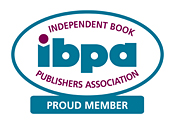I started out this week looking (or listening?) for my voice. Along the way, I was unexpectedly thrilled to discover where my novel, Sunrise on the Pier, belongs. It may sound odd, but I didn’t choose a genre and then set out to write a novel; I wrote a novel and then had to find the genre that best fit it.
The romantic suspense novel description, “Finding love in the midst of resolving an intrigue or mystery” fits it perfectly. As (I’m sure) all romantic suspense novelists do, I tried to intricately weave the love story of the two main characters with the story of the mystery they are trying to solve. Now I know that my unique voice as an author is revealed in the way I composed the story.
Having only written one novel, it seems arrogant to ask. But I’m heading into my second novel and I need to know as much as I can before I get too far along. So, here goes – what makes my stories recognizable as Cathryn Louis novels?
First, I suppose, is the way I use the prologue. Common wisdom says that there shouldn’t be a prologue. But I like having it. I use it to introduce the lead male character and the story element that draws the lead female character to him. I like the idea of having a larger than life, unclaimed Alpha male to write toward. I’m hopeful that it’s also suspenseful for readers to go into the first chapter thinking ‘He’s [insert your favorite Alpha male description here]! How does she meet him? The lead male character in my next book apparently agrees – even though I yelled at him. 🙂
Another trait is that my female characters are all accomplished and successful in their own right. They had been in complete control of their lives before the dangerous event that happens out of nowhere. Just as in real life, it takes everyone some time to realize how dangerous the event is. Meanwhile, the event creates a number of side effects, some of which are escalating towards overt danger. The suspense for the reader is that it isn’t clear which side effects are the dangerous ones, or when the protagonists will get the full picture of what the antagonists are doing. By the way, my characters also talk a lot. They enjoy the interplay of dialogue – including internal dialogue. In the multiple plot lines that I develop, every clue about the dangerous side effects is revealed in conversation – not in narrative.
I think the most recognizable element of my voice is my use of multiple points of view. I introduce each plot line into the story by using the voice of the character who drives it. I believe this heightens the suspense for readers as they will see not only the heroine’s view of her world, but also the forces coming together for and against her. At each turn of the page, I endeavor to keep the questions “What will she do?” “What can she do?” foremost in readers’ minds, without diluting the suspense with the question, “What’s going on?”. A simple example is that I would make sure readers know that the villain is behind a particular door, so that I can then drive the suspense of will she or will she not open it. This approach prevents me from inadvertently being ambiguous about the significance of the door.
Of course I have challenges with writing this way. But they can be resolved in a couple of editing sessions. For example, the prologue mustn’t be ‘gimmicky’. It truly must introduce the element that drives the theme of the love story, and establish the ‘Alphaness’ of the lead male character. Another challenge I have is to insure there aren’t too many or unnecessary points of view. Otherwise, I’ve got too many subplots and run the risk of diluting the story of the lead female character. Sometimes I include minor points of view where they seem to enhance the suspense. When I do that, I have to make sure they are valid.
My biggest challenge? I have to admit that it is finding the balance between dialogue and narrative. I tend to err on the side of too much internal dialogue. I also need to make sure that the characters are doing something interesting while they’re thinking. Most of all, the character should be trying to resolve an internal conflict – not thinking exposition.
Common wisdom (there it is again) says it’s far too early in my career to attempt this style of writing. But because the stories in my head are multi-faceted, simpler styles don’t work for me. I’ve gotten writer’s block trying to force them into a format that isn’t natural for them. Though it is by far the more difficult route, I’ve got to perfect my own voice rather than try to lip-sync to someone else’s. Hopefully I’m not tone deaf! :)D



Very interesting insight into how you work. Common wisdom isn’t always right – you go for it. My first novel was a dual first person narration – common wisdom advises against this too for the inexperienced – but it worked for me. All the best with the novel.
Thanks, Anne. I’d like to read your novel. Sounds interesting. I can think of a few novels I wish had been written that way.